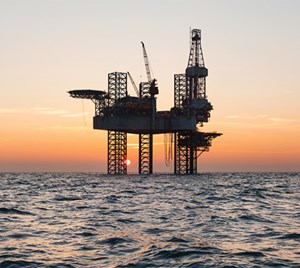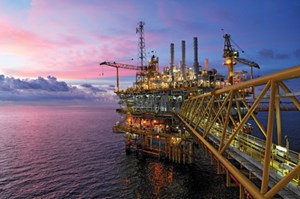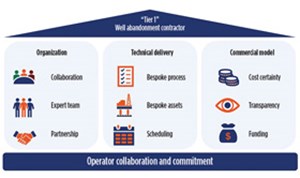Structured commercial model, dedicated resources tackle P&A challenges
When a group of investors launched Well-Safe Solutions last year, the core management team worked to identify challenges that operators and regulators encounter during decommissioning. In most cases, it’s expensive, and typically there’s a shortage of experience in plug-and-abandonment (P&A) activity. It’s also very different from E&P. Therefore, companies have to address the challenges differently to successfully overcome barriers.
CHANGE IN PRIORITIES
Prior to the oil price slump, North Sea operators had focused more on productivity and had largely deferred decommissioning activity, Fig. 1. But with many mature UK fields approaching life-end, and with an increasing stock of shut-in wells, their priorities have changed.
At Well-Safe, the aim is to reduce well P&A costs by 35% or more, by leveraging campaign-based savings, not only for small well counts, but also by spreading spend. This approach allows the company to tackle costly and complex late-life activity, offering flexibility to phase abandonment expenditure.
We have established five P&A clubs, similar to the rig club concept that was widely adopted by operators in the 1980s as an innovative way to reduce the cost of North Sea E&P campaigns.
In times when the market was strong and a single well needed to be drilled, it was difficult and extremely expensive to hire a rig. Drilling companies were focused on long-term contracts that would deliver bigger returns. So, the solution was to build multi-well campaigns, in partnership with other companies, to drill a series of wells at a fraction of the cost.
COST-DIFFERED SOLUTION
The rig club was effective, but the P&A model is decisively different. As operators schedule their P&A projects, we build campaigns giving them access to a specialist team with the knowledge and engineering expertise required. If operators prefer to allocate their available cash for development, we can provide funding solutions for their P&A needs, which they can pay back over an agreed period, Fig. 2.
The company is geared to providing the market a service specifically focused on P&A, from front end engineering and design, through detailed design and delivery—a bespoke model, different to anything else on offer. Having the five different clubs, designed around different assets, we can deploy a jackup, semi-submersible, land rig or a deepwater vessel to deliver P&A operations on all well types. It’s a focused vehicle to deliver the technical aspects of late-life activity.
The assets used are determined by the type of well, water depth and location. For example, a subsea well would need to be serviced, using either a semi-submersible or a vessel. But, a jackup could be used if the water is shallow enough.
By becoming a member of the P&A club, operators can spread the risk and cost of P&A with other club members. This also enables them to exploit economies of scale to safely and efficiently remove hundreds of wells rather than focusing on single, or smaller groups. Whether it be one well or 20, in a year’s time or five, it’s a long-term solution, which taps into the best P&A engineering expertise available in the UK.
Performance-based work. All our operations are delivered, using incentivized commercial models that help drive top quartile performance from Well-Safe and our primary contractors and service partners. This is based on well specifics rather than generic well categories, and is delivered by our dedicated P&A assets facilitated by using standard terms and conditions across multiple well operations. If the P&A work comes in under budget, then the savings will be redistributed between the client and the main contractors involved in the project. This provides greater cost certainty and continues to reward improvements in delivery, while minimizing risk and non-productive time.
If rig rates go up, we can offer consistency, as our bespoke P&A units will not be linked to drilling rig market rates. For example, if an operator out with the club was to hire a rig, and the day rates continue to increase from their current level, to say $300,000/day, which was the case not long ago, the difference is going to add a significant amount of cost to the overall P&A campaign. Under our long-term multi-year contracts, with agreed inflationary linked increases, club subscribers will be provided cost certainty for their P&A projects over a 10-to-15-year period, with best-in-class well engineering teams and project management.
Optimized supply chain. If we are doing a large number of wells over longer durations through our P&A clubs, we can secure better supply chain contract rates and offer funding to support the project. If an operator’s well starts to deteriorate, or there are concerns about its integrity, we can accelerate it up the schedule, ensuring it becomes a priority. We can react, saving the operator from going elsewhere, they have that guarantee, so they don’t have to hire a rig for one well, which would cost a premium and would need to be kitted out with the tools required to perform the P&A work, as well as an engineering team.
Some operators may have 20 wells they need to P&A in a single field. However, doing them all at once will have a large impact on the capital needed to spend that year and could prevent investing in new business opportunities. The new model gives operators the ability to spread the cost impact. For example, a company could schedule four P&A jobs per year, over five years. That program is inefficient under a conventional model, because the company would have to repeatedly hire a rig, bring it in and release it. This requires an onshore and offshore crew each time, incurring even more costs. We provide a team when required, and it will always be the same people, so the knowledge and lessons learned are retained and applied to each campaign.
Capping rig prices. Currently, P&A contracts are typically combined with drilling contracts, under which a drilling rig is supplied at an agreed day rate, with options for subcontracting all services required for the P&A operation. However, daily rates for drilling units are market-driven, and we expect costs to increase over the next few years. Today, a semisub in the region can cost approximately $100,000/day, compared to $300,000 to $400,000/day for the same unit, two to three years ago.
P&A CAMPAIGN
So, how do we prepare/plan for a P&A campaign and support a multi-well operation? First, we work closely with operators, regulators and industry bodies to fully understand their expectations and requirements. Delivering tailored processes, modified assets, flexible scheduling, and funding options, we can remove wells and wellhead equipment in a safe, efficient and cost-effective manner. It’s about using the right tools for the right duration, so you’re not operating with an over-powered or over-equipped rig to ensure a cost-effective solution.

We utilize software systems that support the work we plan to perform. This allows us to take a drilling rig and adapt it for the P&A market. When we analyze downhole components in terms of the P&A phase, we will look to partner with downhole specialists, such as Schlumberger, Haliburton, Weatherford or BHGE, while always looking for the best technical solution for the well. They provide the downhole tooling specialists, and we supply the platform from which to deploy them, Fig. 3. Our subsea engineering department can develop additional equipment if required, modifying existing tools to minimize re-engineering and keep costs to a minimum. We’ll also engage with the market to link up with small, innovative companies that have developed downhole tools that can enable us to carry out well P&A campaigns as efficiently as possible.
Additionally, our rigs are sufficiently equipped to deliver increased efficiencies beyond what a conventional rig can provide. They are fully staffed with engineering specialists to provide the services required to deliver the specific P&A campaign. This enhanced offering enables us to deliver an incremental solution for a specific field using dedicated P&A assets. It’s about maximizing operational efficiency to deliver value to the overall decom solution. While we are not looking to venture out with the P&A phase of decommissioning, if there are ways we can support other areas to reduce costs, we will.
VALUE DELIVERED
To date, the company’s in-house teams have been involved in multiple P&A projects that have delivered in excess of 350 wells. The lessons and the knowledge gained from those campaigns have been embedded back into our project delivery process. But, further to that, we’re looking at how those lessons can be captured and put back into future projects.
Traditionally, once these types of projects have been completed, everything is demobilized, the team breaks up and learnings are lost. With the continuous improvement model, if we P&A several wells for an operator and come back to complete the remainder at a later date, the operator does not need to keep the original team in place for the second phase: we simply pick up where they left off.
The P&A clubs stimulate the decommissioning sector and also enable operators to invest more on development and production opportunities. The investment also can be assisted by operators using the cost certainty that the P&A club offers to review liabilities being held on company balance sheets.
As we become more effective, through retaining and sharing knowledge, additional cost savings will be possible, based on greater productivity and faster results. Combined, these improvements will help the UK North Sea industry achieve the Oil & Gas Authority’s target of a 35% reduction in P&A costs. ![]()
Building company assets, worldwide presence
In November 2017, Well-Safe Solutions secured a 40,000-ft2 marine and logistics base in Dundee, and has since short-listed a number of other marine assets. Following Dundee Port Authority’s $13.3-million investment in a new quayside, the facility can now accommodate heavy-lift vessels, and the deepwater berth enables the company to bring its own assets alongside comfortably.In addition, there are other facilities for services, such as decontamination and recycling. As the port owner works with AF Decom to establish a new business focused on topsides decommissioning, this will provide other opportunities. The new model will help embed new technologies, particularly disruptive tooling and techniques, to drive down the cost of P&A.
Well-Safe also has joined several key industry associations, including Subsea UK, Decom North Sea, and the Oil and Gas Technology Centre. Matt Jenkins, director of well abandonment, is the chair of Oil & Gas UK’s decommissioning workgroup, and is revising the current well abandonment guidelines.
Although the company is focused on the UK, the aim is to establish a presence in Brazil, Mexico and Australia. The firm is working with Scottish Enterprise to export the innovative model to land and international locations.
The upgraded Dundee facility, with deepwater berth, can now accommodate heavy-lift vessels. ![]()
- Applying ultra-deep LWD resistivity technology successfully in a SAGD operation (May 2019)
- Adoption of wireless intelligent completions advances (May 2019)
- Majors double down as takeaway crunch eases (April 2019)
- What’s new in well logging and formation evaluation (April 2019)
- Qualification of a 20,000-psi subsea BOP: A collaborative approach (February 2019)
- ConocoPhillips’ Greg Leveille sees rapid trajectory of technical advancement continuing (February 2019)




